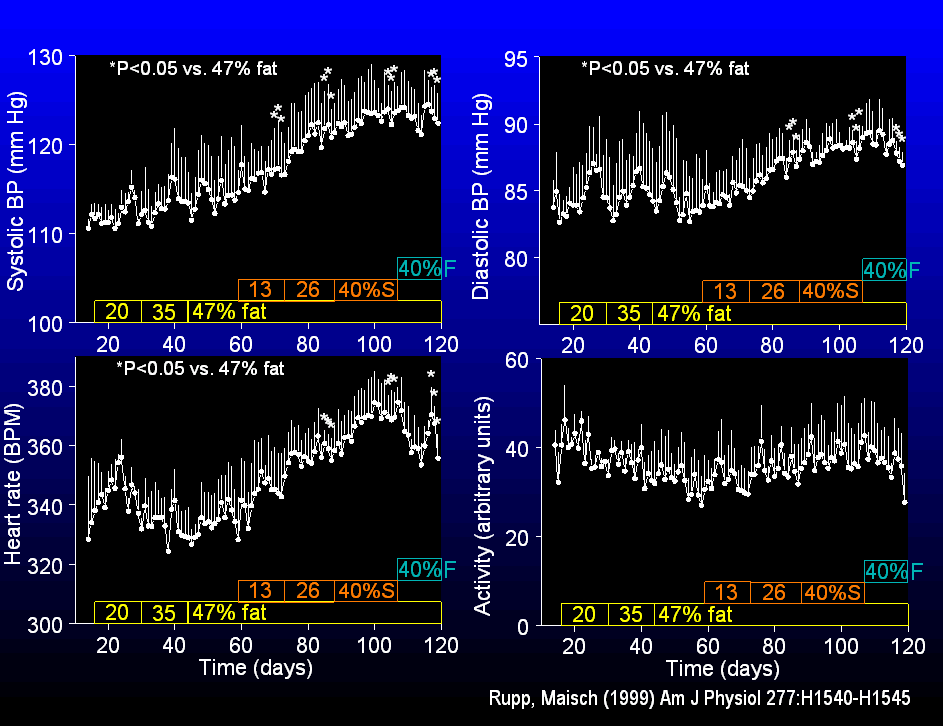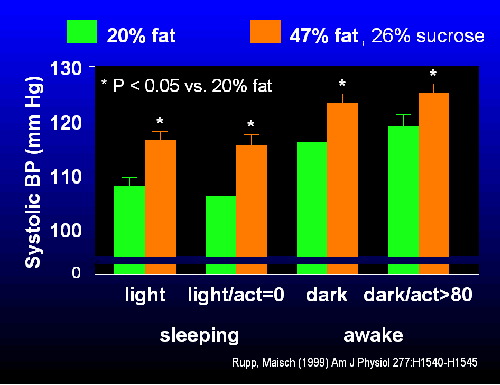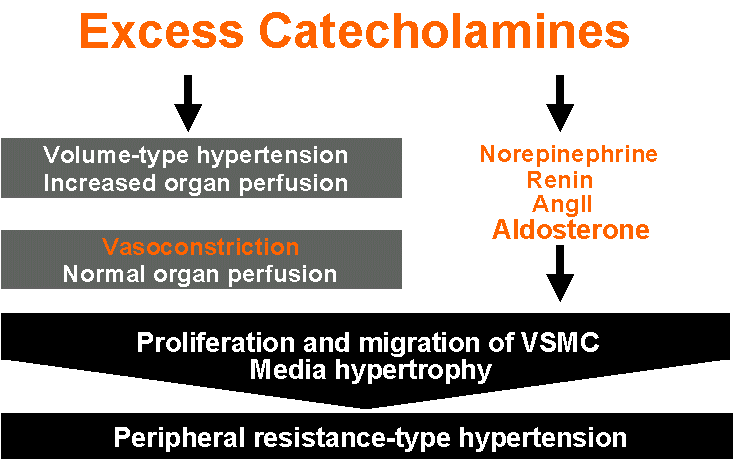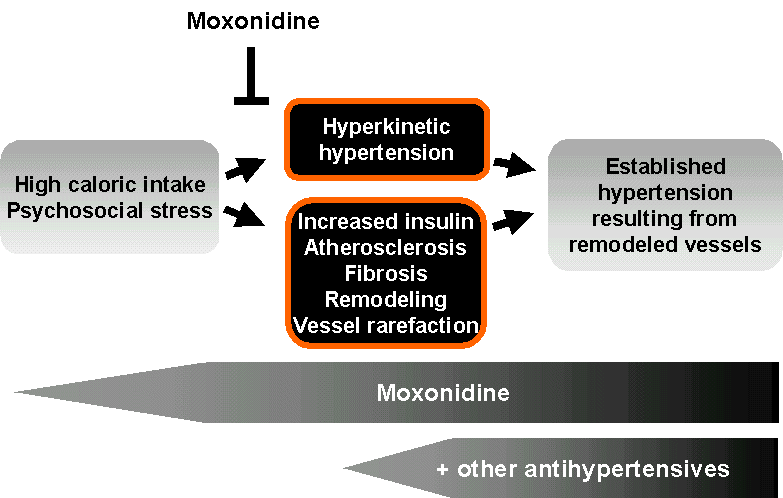

The hyperkinetic hypertension arises most probably from an increased sympathetic outflow of the brain. Of particular relevance is the finding that the rise in heart rate and blood pressure occured irrespective of day-night cycle. The hypercaloric diet raised systolic blood pressure at night, i.e. light phase when rats are inactive, to a level observed during the active dark phase. This continuous rise in blood pressure and heart rate contrasts effects of psychosocial stress which occur only intermittently. We believe that the continuous rise in blood pressure contributes to the deleterious remodelling of the vasculature.

A rise in sympathetic activity stimulates renin release of the kidneys
leading to enhanced angiotensin II and aldosterone influences. These
factors
have a major influence on the vascular remodelling and thus
manifestation
of high blood pressure.

Current treatment of
hypertension is typically initiated when high blood pressure is
established, i.e. systolic blood pressure greater 140 mm Hg and
diastolic blood pressure greater 90
mm Hg. However, this hypertension is preceded by a long period of
hyperkinetic hypertension which is typically not treated. Hyperkinetic
hypertension is
associated with sympathetic overactivity. It appears thus as a rational
therapy to reduce the raised sympathetic outflow of the brain. This is
achieved
best currently with the selective imidazoline agonist moxonidine.
Whenever
a marked adverse remodeling of the vasculature has occurred in later
years,
often one antihypertensive drug is not sufficient for normalizing the
high
blood pressure. Under these conditions, a combination with other
antihypertensive
drugs is useful.
